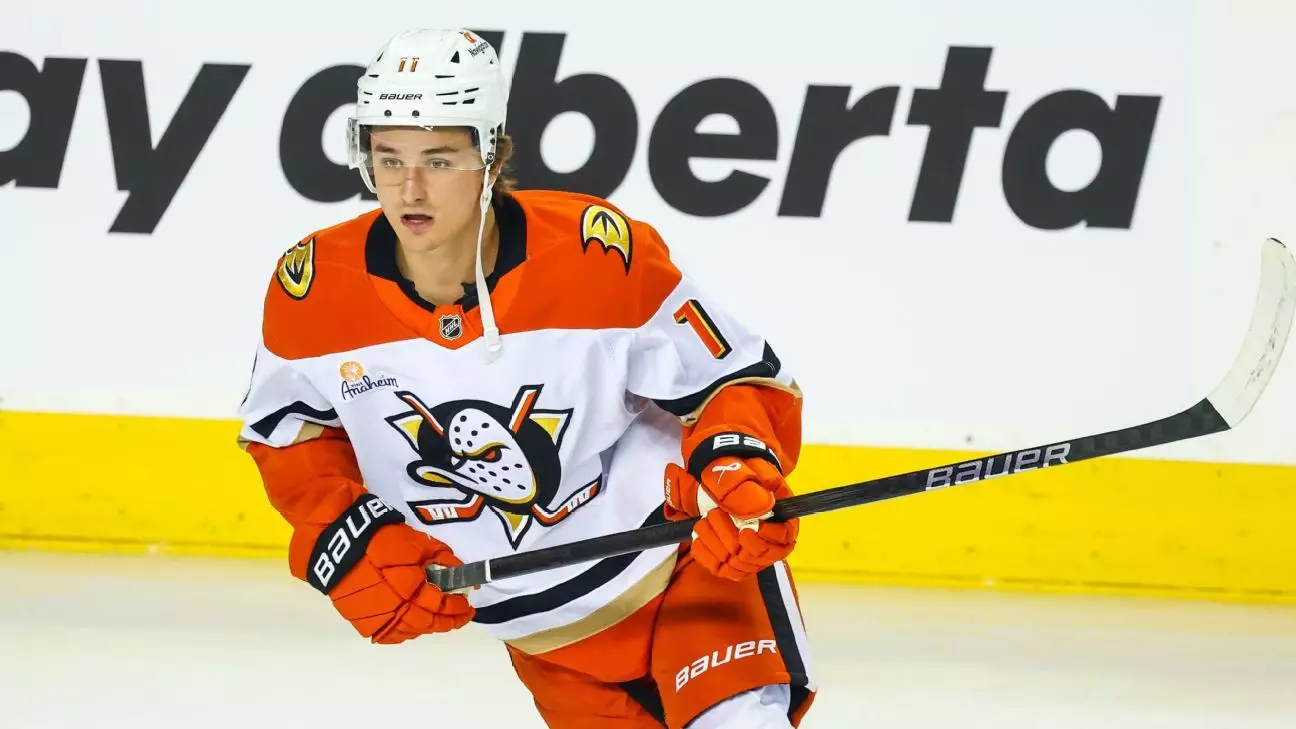The recent trade of Trevor Zegras from the Anaheim Ducks to the Philadelphia Flyers marks a significant pivot for both franchises, sparking excitement and anticipation for what comes next. Zegras, a young forward with a commendable scoring record, embodies the dual nature of promise and uncertainty. While he has already achieved the feat of scoring 20 goals in multiple NHL seasons, his path has been marred by injuries and lapses in performance. By trading him to the Flyers, a team desperate for dynamic offensive talent, both organizations aim to redefine their trajectories.
The Flyers have secured a center who not only bolsters their offensive arsenal but also possesses the potential to evolve into a centerpiece of their future. By acquiring Zegras, they add a player who has previously showcased his ability to contribute substantially to achieving offensive goals. As one of the NHL’s youngest squads, Philadelphia’s decision to embrace Zegras reflects a broader vision of nurturing a core of youthful talent.
Analyzing the Potential: A Young Star’s Journey
Described frequently as possessing significant potential, Zegras has been a topic of heated debate among hockey aficionados. The promising statistics of two consecutive 60-point seasons signal impressive accomplishments, yet injury issues and inconsistency over recent seasons raise questions. Can he reclaim the form that once had him labeled as a future face of the league? The answer lies not only in his capabilities but in the environment he’s entering with the Flyers.
Surrounding him with skilled wingers such as Travis Konecny and rookie sensation Matvei Michkov could provide the much-needed support to regenerate his scoring touch. Critics may argue that solely analyzing his past successes paints an incomplete picture of his future. Nonetheless, seizing the opportunity to reinvigorate a player’s career is a risk worth taking, particularly with the Flyers eyeing a resurgence after struggling offensively last season.
Ducks’ Strategic Shift: Financial Prudence and Team Dynamics
From the Ducks’ perspective, this trade illustrates a calculated approach to roster management. With rising stars like Leo Carlsson and Mason McTavish emerging as viable offensive leaders, Zegras becomes expendable. This reality raises an intriguing question: Is it wise to allocate significant resources towards a player whose role could be relegated to a third-line center? With financial considerations looming large, Ducks management opted for a strategic rebuild, leveraging Zegras’ value in a trade that yields both future picks and a cost-effective player in Ryan Poehling.
Poehling, though not a star in his own right, represents a management determination to replace one high-priced player with another option that fits more snugly within the team’s financial framework. With the Ducks looking toward the future with upcoming restricted free agents, the $1.9 million cap hit for Poehling is appealing. His recent performance, scoring 12 goals and 31 points, hints that he can be a steady contributor without breaking the bank.
Future Implications and Tactical Depth
While Zegras’ departure is certainly looming large over Anaheim, it also raises intriguing tactical questions about how the Ducks will structure their offense moving forward. Carlsson’s and McTavish’s emergence as top-line players reshapes their offensive depth chart dramatically and creates an opportunity for construction around a new leadership core. Keeping an eye on financial logistics ensures that the Ducks remain competitive in future free agency markets while cultivating a new identity marked by speed, youth, and skill.
For the Flyers, Zegras’ arrival injects much-needed energy into a lineup that finished lower in offensive rankings than anticipated. Given that they finished last season ranked 24th in goals per game, the potential explosion of talent that comes from integrating a player like Zegras could alter playoff ambitions dramatically. Optimists may see him as a linchpin; skeptics may remind us that potential must translate into tangible performance.
The Ducks find themselves in a transitional period, aligning their future with the realities of the NHL’s salary cap and emergence of younger players, while the Flyers initiate a bold gamble that could redefine their offensive structure. Within the swirling uncertainties of injury, performance, and financial ramifications lies excitement—baseball fans, after all, thrive on the unpredictability of player developments. Through these trades, both teams signal ambition and readiness to adapt, even amid the odds.

